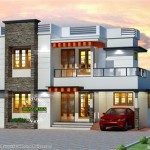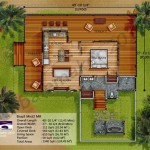Exploring House Plans from Southern Living: A Glimpse into 1921 Architectural Styles
The Southern Living brand, as it is known today, did not exist formally in 1921. However, the architectural styles prevalent during that era in the Southern United States offer fascinating insights into the design preferences, social norms, and technological advancements of the time. Examining house plans that reflect these styles provides a window into the lives of Southern families a century ago, revealing much about their aspirations and the constraints they faced. While a specific “houseplans Southernliving com 1921” resource is historically inaccurate, understanding the architectural characteristics of that year allows for a valuable exploration of Southern housing trends.
The early 1920s marked a period of transition in American architecture. The Victorian era, with its elaborate ornamentation and complex floor plans, was gradually giving way to simpler, more functional designs. The influence of the Arts and Crafts movement, with its emphasis on natural materials and handcrafted details, was also significant. In the South, these broader trends were uniquely blended with regional preferences and climate considerations, resulting in distinctive architectural expressions.
The availability of published house plans was becoming more widespread during this period. Catalogs and architectural magazines offered homeowners a variety of choices, allowing them to select pre-designed plans or adapt them to their specific needs. This contributed to a degree of standardization, but regional variations remained prominent, reflecting the diverse cultural landscape of the Southern states.
The Enduring Appeal of the Craftsman Bungalow
One of the most popular house styles in the South during the early 1920s was the Craftsman bungalow. This style, originating in California, was characterized by its low-pitched roof, wide overhanging eaves, exposed rafters, and prominent front porch. The focus was on simplicity, functionality, and the use of natural materials such as wood and stone. Bungalows were typically one or one-and-a-half stories tall, making them an affordable and accessible option for many families.
In the Southern context, Craftsman bungalows often incorporated regional adaptations, such as larger porches to provide shade and ventilation in the hot, humid climate. Materials like cypress and longleaf pine, readily available in the South, were commonly used in construction. The interiors of these homes were typically designed with an open floor plan, connecting the living room, dining room, and kitchen. Built-in cabinetry, such as bookcases and china cabinets, was a common feature, reflecting the Craftsman emphasis on handcrafted details.
The popularity of the Craftsman bungalow was driven by several factors. Its relatively simple design made it easier and less expensive to build than more elaborate Victorian homes. The emphasis on natural materials and handcrafted details appealed to those seeking a connection to the environment. And the large front porch provided a comfortable space for outdoor living and social interaction, a particularly important consideration in the Southern climate.
The Revival of Colonial Styles
While the Craftsman bungalow was gaining popularity, the early 1920s also saw a revival of interest in Colonial architectural styles. These styles, inspired by the architectural traditions of the original American colonies, offered a sense of history and tradition. Colonial Revival homes typically featured symmetrical facades, multi-paned windows, and classical details such as columns, pilasters, and pediments.
Several variations of Colonial Revival architecture were popular in the South, including the Georgian Revival, the Federal Revival, and the Dutch Colonial Revival. Georgian Revival homes were characterized by their formal symmetry, brick or clapboard siding, and prominent entryways. Federal Revival homes often featured elliptical fanlights above the front door and delicate ornamentation. Dutch Colonial Revival homes were distinguished by their gambrel roofs, which provided additional attic space.
The choice of a Colonial Revival style often reflected a desire to project an image of refinement and sophistication. These homes were typically more expensive to build than bungalows, and they were often favored by affluent families. The interiors of Colonial Revival homes were often designed with formal living rooms, dining rooms, and libraries, reflecting a more traditional lifestyle.
The Rise of the Minimal Traditional Style
As the 1920s progressed, a new style known as the Minimal Traditional began to emerge. This style represented a simplification of earlier architectural forms, reflecting a growing emphasis on affordability and efficiency. Minimal Traditional homes were typically small, one-story structures with simple rectangular footprints and minimal ornamentation.
The Minimal Traditional style was particularly popular in the South, where it provided an affordable housing option for working-class families. These homes were typically built with wood-frame construction and covered with clapboard or brick veneer siding. The interiors were designed with a focus on practicality, with small living rooms, kitchens, and bedrooms.
The rise of the Minimal Traditional style was driven by several factors, including the increasing cost of building materials and the growing demand for affordable housing. The simplicity of the design made it easier and less expensive to construct, and the small size made it easier to maintain. While lacking the architectural flair of earlier styles, the Minimal Traditional home provided a comfortable and functional living space for many Southern families.
In addition to these three dominant styles, other architectural influences were present in the South during the early 1920s. Spanish Colonial Revival architecture, inspired by the Spanish missions of California, gained popularity in some areas, particularly in Florida and the Gulf Coast. This style was characterized by its stucco walls, red tile roofs, and arched doorways and windows.
The selection of a house plan in 1921 was influenced by a variety of factors, including budget, family size, personal preferences, and regional traditions. The available options ranged from simple Craftsman bungalows to more elaborate Colonial Revival homes, reflecting the diverse needs and aspirations of Southern families. While the specific "houseplans Southernliving com 1921" does not exist, understanding the styles popular during that era provides invaluable insight into the architectural landscape of the time.
Technological advancements also played a role in shaping house design during this period. The widespread adoption of electricity and indoor plumbing made it possible to design more comfortable and convenient homes. Kitchens became more efficient with the introduction of new appliances such as electric stoves and refrigerators. Bathrooms became more luxurious with the inclusion of features such as bathtubs, showers, and flush toilets.
The study of house plans from the early 1920s offers a valuable glimpse into the past. By examining the architectural styles, materials, and floor plans of these homes, it is possible to gain a deeper understanding of the lives of Southern families a century ago. Their homes were not just shelters; they were reflections of their values, aspirations, and the changing times.
Furthermore, the impact of these historical styles continues to resonate in contemporary Southern architecture. Modern home designs often incorporate elements of Craftsman, Colonial, and Minimal Traditional styles, creating a sense of continuity and connection to the past. The emphasis on natural materials, outdoor living, and regional adaptation remains a defining characteristic of Southern architecture today.

Our Favorite House Plans On Hallsley S Street Of Hope Southern Living Unique
:max_bytes(150000):strip_icc()/lowcountry-farmhouse-b47ff5abc5fb41e4a825f9ca4afe5ef2.jpg?strip=all)
The Best House Plans Of 2024

To Show Our Appreciation This Holiday Season We Are Offering 10 Of All Southern Living House Plan Plans Country

4 Bed Bath Swap Downstairs Bedroom With Upstairs Study Southern Living House Plans French Country Exterior

1921 Fenner Kit Home Eclectic Classic With Bungalow Elements Sims House Plans Blueprints Farmhouse
See Some Of Our Favorite Southern Living House Plans On Hallsley S Street Hope
18 Open Floor House Plans Built For Entertaining

Find Floor Plans Home Designs And Architectural Blueprints Country House Narrow Lot Southern Living

Style With Simplicity J Dean Winesett Southern Living House Plans 1542 Sq Ft 3 Bed Cottage Floor Vintage
18 Open Floor House Plans Built For Entertaining
Related Posts








